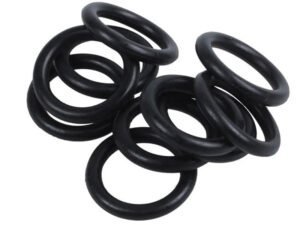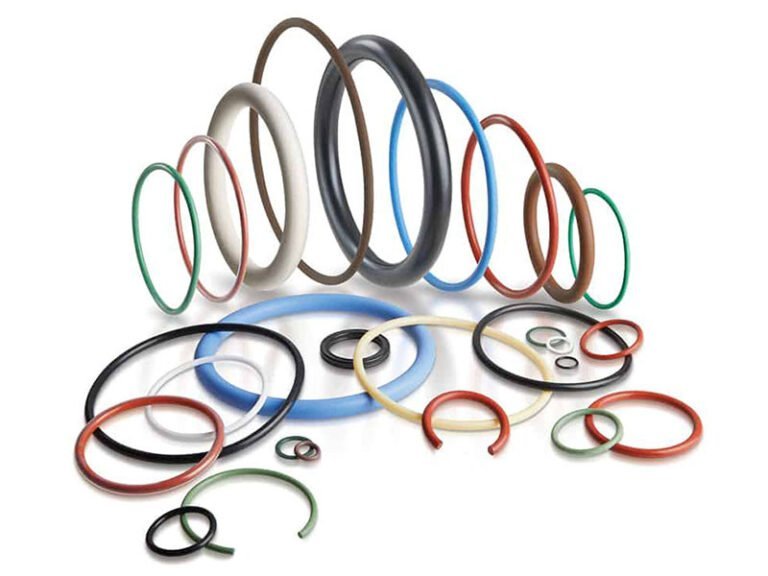O-rings are essential sealing components widely used across industries such as automotive, aerospace, hydraulics, and refrigeration. Among the various types, green o rings and black o rings are two common variants that often prompt questions about their differences, materials, and applications. This article delves into what green o rings and black o rings are, their material properties, performance comparisons, and important considerations when identifying o ring colors.
What Are Green O Rings?
Green o rings are typically made from hydrogenated nitrile butadiene rubber (HNBR) or fluorocarbon (FKM, e.g., Viton). The material distinguishes green rubber o rings from other types due to its enhanced durability and resistance. The green color is molded directly into the rubber, serving as a visual indicator of the material and its properties.

Green O Rings Properties
Green o rings are popular for their excellent resistance to high temperatures, exhibit superior chemical compatibility, and enhanced hardness and wear resistance. The green o rings are often withstanding continuous exposure up to approximately 150°C (302°F). They resist aggressive oils, fuels, refrigerants like R-134a, and aggressive chemicals and pressure and temperature fluctuate frequently.
Green O Rings Applications
These properties make green O-rings a go-to choice for specialized applications, such as:
- Automotive air conditioning systems using R-134a refrigerants.
- Chemical processing plants handling corrosive fluids.
- Aerospace components exposed to high temperatures and pressures.
- Oil and gas systems requiring resistance to sour gas and hydrocarbons.
What Are Black O Rings?
Black o rings are the most ubiquitous sealing rings and are generally made from nitrile rubber (NBR), Buna-N, ethylene propylene diene monomer (EPDM), or sometimes fluoroelastomers (FKM). The black color is the traditional standard and offering versatility and cost-effectiveness.

Black O Ring Properties
Black rubber o rings offer good resistance to oils, fuels, and moderate chemicals, with a typical temperature range from -40°C up to about 120°C (248°F). They tend to be softer and more pliable than green o rings, which can be advantageous in applications requiring flexibility. Black silicone o rings, another variant, provide excellent temperature tolerance but are less common than NBR-based black o rings.
Black O Ring Applications
Because of their balance between performance and affordability, black o rings are widely used in automotive engines, fuel systems, pneumatic tools, and general machinery. Their ability to seal effectively in moderate temperature and chemical environments makes them a go-to choice for many industrial sealing needs.
Green O Rings vs Black O Rings: Key Differences
Understanding the differences between green o rings and black o rings is crucial for selecting the right seal for your application. Here’s a detailed comparison:
| Feature | Green O Rings (HNBR) | Black O Rings (NBR, FKM) |
|---|---|---|
| Material Composition | Hydrogenated Nitrile Butadiene Rubber (HNBR) | Nitrile Rubber (NBR), Buna-N, or FKM |
| Temperature Range | -40°C to 150°C (higher heat tolerance) | -40°C to 120°C (moderate heat tolerance) |
| Chemical Compatibility | Excellent resistance to oils, fuels, refrigerants, and harsh chemicals | Good resistance to oils, fuels, and moderate chemicals |
| Hardness & Durability | Firmer, more wear-resistant | Softer, more flexible |
| Cost | Generally higher due to superior properties | More cost-effective |
| Color Identification | Green molded into rubber for easy recognition | Black standard color, widely recognized |
O Ring Color Identification and Considerations
O-rings often come in a spectrum of colors, and each hue serves a specific purpose.
O Ring Color Identification
- Material Identification: O ring colors help quickly identify the rubber material, like green often means HNBR and black usually means NBR. This makes it easier to choose and replace the right o ring.
- Hardness and Performance: Colors can show different hardness levels, helping users pick the right seal for their needs.
- Temperature and Chemical Resistance: Some colors indicate how well the o ring handles heat or chemicals.
- Quality Control and Batch Tracking: Colors can mark production batches or quality grades for easier management.
- Branding and Standards: Manufacturers may use colors to follow standards or for brand recognition.
- Visual Inspection: Colors help spot wear or damage during maintenance checks.
O Ring Color Identification Considerations
While color coding helps in quick identification, it is essential to understand the limitations and nuances:
- Color Does Not Guarantee Performance
Relying solely on color to determine the material or performance of an o ring is risky. Different manufacturers may use different color schemes, and the same color might represent different materials. - Lack of Universal Industry Standards
There is no global standardization for o ring color coding. Color cannot replace detailed material specifications and technical data. - Material Specifications and Application Conditions Are Key
When selecting an o ring, the final decision should be based on material properties, operating temperature, chemical compatibility, and application requirements. Color should only be used as a supplementary reference.
Custom O Ring Solutions in Any Material and Color
At Flexiparts, we specialize in custom O-ring manufacturing to meet your specific application needs. Whether you require O-rings in various materials—such as NBR, FKM, EPDM, or silicone—or custom colors like black, green, red, or clear, we can deliver with precision.
Remember, O-ring color alone does not determine the material. That’s why we offer expert guidance and flexible production options to ensure you get the right O-ring type, material, and color for optimal performance.




